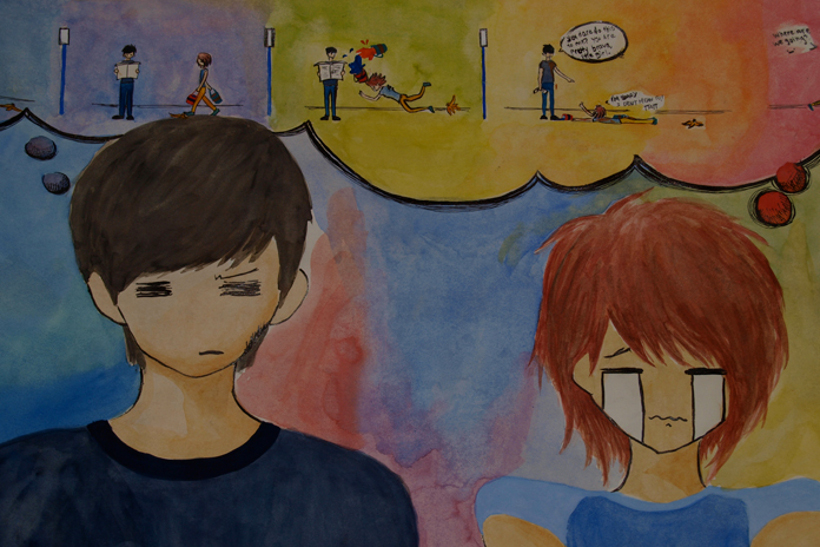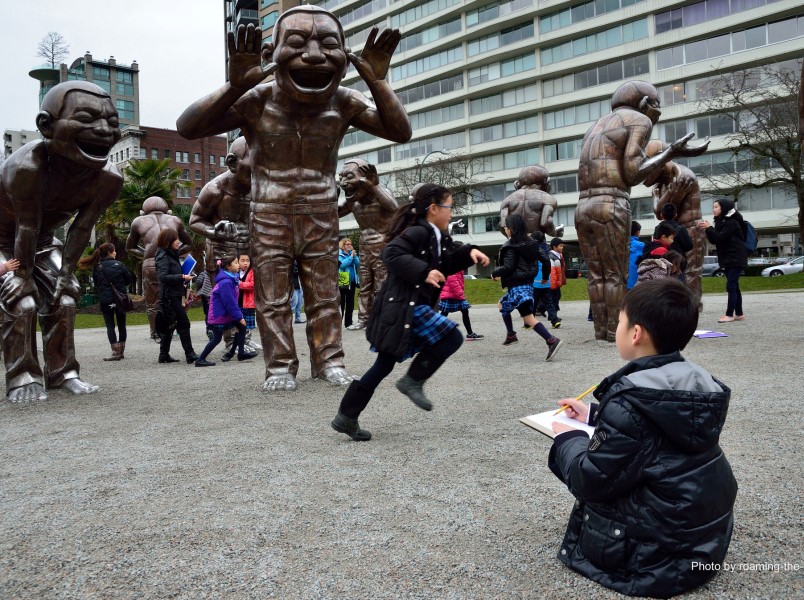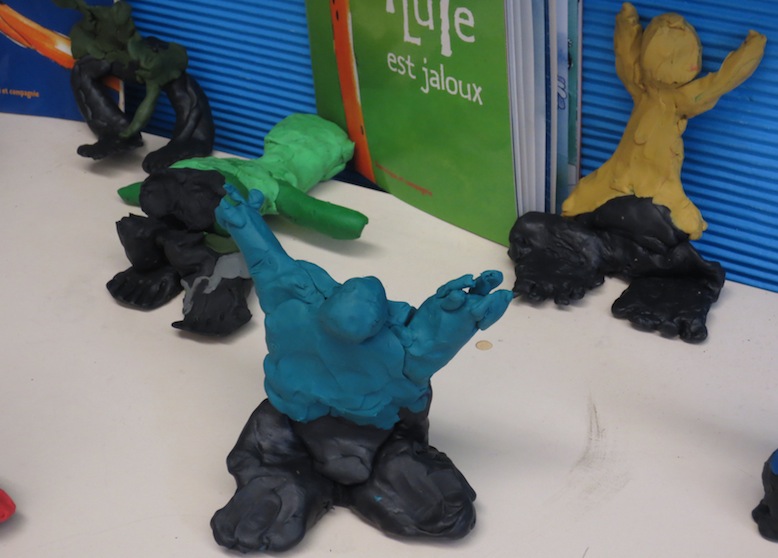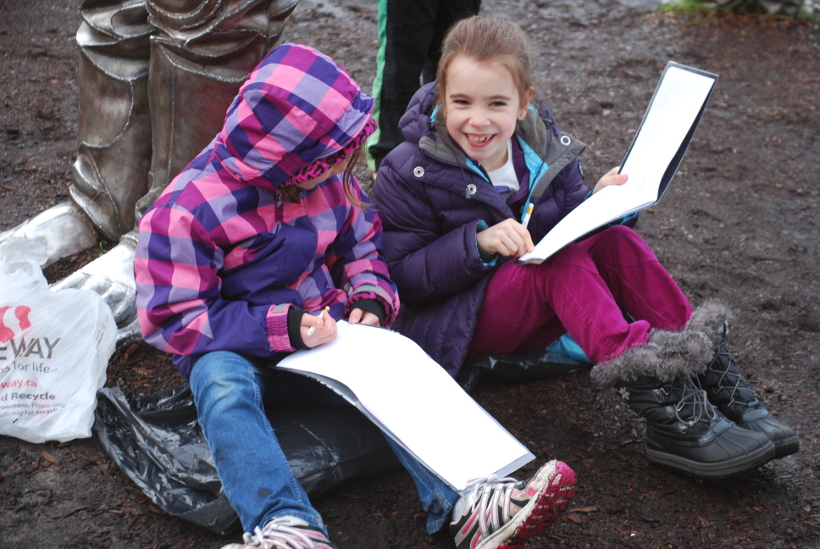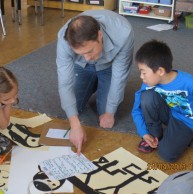The Importance of Positive Relationships
Physical and Health Education - Grade 3
This unit of inquiry is not a recipe book but rather a launchpad to inspire new BIG IDEAS. We encourage you to use and/or modify one, or several of the BIG IDEAS below. Adapt it to the grade/ ability level of your students.
Enduring Understanding
Positive relationships are important for mental wellness and supportive communities.
Guiding Questions
How do we build positive relationships with others? How do our verbal and non-verbal expressions impact on others?
Mind Opening
Choose or devise practices to encourage students to be open to new experiences and ways of thinking in your classroom. For example, the MindUP in-school program.
• Focused Breathing: Learn and practice breathing in a way that helps the brain think more clearly. Focus on how air enters and exits our bodies and our muscles.
• Ribbon Weaving: As a continuation of the breathing exercise, students may be given a ribbon to hold. Encouraged thinking of what they are bringing to the classroom community by transferring the energy into the ribbon. When students feel mindfully ready, they may open their eyes and weave the ribbon through the class web, as a visual representation of members of the class community.
• Focus on Sound: Review with students the five senses, and tell students that the focus is on what sound they hear. Encourage students to concentrate on all the sound they hear around them during the focused breathing exercise. Ask students to share what sound they heard. Reflect.
Discovery and Inspiration:
Launch the Project
• Introduce the Theme: Present the Enduring Understanding and Guiding Questions using vocabulary that is appropriate for your grade level.
• About Vancouver Biennale: Play a short video.
• Create Project Space: Brainstorm ideas to make the project theme visual and visible using bulletin boards, and/or a project corner to share relevant materials and inquiry questions and processes.
Reference Resources:
• Introduction to Sculpture and Public Art Unit Plan for information on how art has evolved over time and the unique experience sculptures and/or public art brings.
• Vancouver Biennale 2014-2016 Exhibition Theme:Open Borders / Crossroads Vancouver
• A-Maze-ing Laughter (Yue Minjun, China)
Other Resources
“Mon nouveau jouet” / “My New Toy” – by Mo Willems
A Kid’s Guide to Building Great Communities
Questions for French Immersion classes:
Comment est-ce qu’on forme des relations positives dans la communauté?
Comment est-ce qu’on save que cela est une communauté positive?
Qu’est-ce que c’est une relation positive?
Quelles sortes de relations est-ce qu’on a dans la vie? / Avec qui est-ce qu’on a des relations?
Comment est-ce que ces relations contribue aux communatés?
Quelles qualités est-ce qu’on cherche dans un(e) ami(e)?
Comment est-ce qu’on peut définir l’amitié?
Learning to Learn:
Art Inquiry
Make a visit to A-Maze-ing Laughter and encourage students to explore the art piece at different angles individually and in groups. This Art Inquiry process enables the students to practice observing, describing, interpreting, and sharing visual information and personal experiences. Use the Art Inquiry Worksheet to guide and capture their ideas and impressions. Customize or create your own Art Inquiry Worksheet as appropriate for your project and class needs.
At the A-Maze-ing Laughter, invite student responses to the facial expression of the sculpture. How do we build positive relationships with others? How do our verbal and nonverbal expressions impact on others?
Shared Insight
• Sharing Art Inquiry Experience: Ask students to share the Art Inquiry Worksheet responses in class.
• Artist Themes – Research: Stations In small groups students rotate between information stations detailing the artist’s life and work. Station topics include: (1) education and training; (2) lifetime of artwork; (2) materials and processes; (3) beliefs and values. At each station, students answer questions and complete a task. For example, at the station “life’s work” students might plot the artist’s various installations on a map of the world.
• Artist Themes – Non-Verbal Expression: Have students identify the emotions shown by the figures in A-Maze-ing Laughter. How do they know what emotions they are expressing? Ask students to make the same facial expressions and body positions as the figures. How do they feel? What expressions do they make for other emotions? Can they tell what people are feeling when they look at them?
• Relationship: Facilitate sharing on what makes a good friend. Why is it important to have good friends? Have you ever upset your friends?
• Group Behaviour: In a circle, students share how they are feeling on a scale of 1-10. Reflect on how they rate their feelings? Were they influenced by what others said? Scaffold conversation to help students recognize group dynamics.
Inquiry Challenges
The inquiry challenges include games, discussions, demos, and creative art assignments to heighten students’ awareness to how their expressed emotions can impact others and the community they are in.
• Give and Receive Game: Introduce question: “What kind of person makes you feel good?” Class creates a graffiti board with ideas. Count and identify the most and least popular words used. Ask students to reflect on their relationships with other students based on the results.
• Action and Reaction: Pick a book that can illustrate how the action of one character can affect the reactions of others. For French Immersion class, suggest Mon nouveau jouet by Mo Willems. Engage the students by asking them to role play the different characters throughout the reading. Ask the students to explore possible endings. Possible adaptations include labeling each ribbon (from Mind Opening: Ribbon Weaving) with a different emotion and ask students to map out the emotional journey of the characters.
• Defining Relationships: Students to explore who they have relationships with, then representing these relationships in a set of concentric circles starting with who they spend most time with.
• Community Visual Image: Ask students to discuss what communities they are a part of and how they would describe their communities. Build a visual image using words, different colours and shapes. Reflect on how positive and negative aspects of the community affect the individual. Introduce the idea of supportive communities and brainstorm ways to make that happen.
• Candy Bar Wrapper Challenge: This challenge will help students identify responsibility through the lens of community. Students will ask themselves “How far will you lean out of bed to pick up a candy bar wrapper?” Refer to A Kid’s Guide to Creating Great Communities, page 8.
• Five Senses Walk: Explore the community through the different senses. Take a walk around the classroom or school and write about the experience describing each sense. Build a new visual community image with this information. Compare with the original image and reflect on the experience.
Student Creation and Taking Action
Students can work in groups to create a school performance from any of these artistic forms: spoken words, visual arts and dance movements, to express their emotions and how they deal with shifting their emotion states. Through this approach, the students can share and reflect on their past personal behaviours and experiences without any judgement imposed.
Students can create a map of resources available in their neighbourhood to welcome newcomers to the school or community. Students with other language skills can translate the resource map.
The students can take action by initiating a sustainable behavioral shift to build positive relationship within the school community. By organizing a school performance, the students share a collective message to their peers, teachers and parents.
The students can distribute the resource map at the local community centers for new families or work with senior students to create a welcome website or a smartphone app.
Reflection
• Teacher and students can reflect on their entire learning process by revisiting the Enduring Understanding and relevant Guiding Questions.
• How did the unit of study open inquiry, create cross–curricular learning opportunities and/or apply learning to real life situations? Has this unit of inquiry changed your opinions, values and world view? In what ways, if any, has it helped you grow as a learner?
Ideas for Cross-Curricular Access
• Mathematics – Data Collection and Graphing: Use the results from the Give and Receive Game Challenge. Use a line chart and plot the top five words. Compare with words from the Community Visual Image Challenge and identify similarities and differences.
• Language Arts: Referencing the Action and Reaction Challenge, reflect the role playing experience in their journal. As a class, brainstorm a list of scenarios on situations that make them feel upset. For each scenario, write and present a solution. A tree can be used to visually present cause and consequences.
• Social Studies – Governance: In the candy wrapper activity, students are distinguishing their roles and responsibilities as members of a community and assessing how their actions towards their responsibilities affect others. They may identify these roles and responsibilities through verbal discussion, or in a writing activity (Language Arts). They may extend this activity by applying it to the school community through little and big buddies. When working with their buddies, when do parts of the work fall on the little buddies’ shoulders / the big buddies’ shoulders? How is this decided? Students use a T-chart to identify and distinguish between the role and responsibilities of each person.
Credits
Written by: Kathryn Masson and Jocelynn Mortlock, 2013 UBC Elementary and Middle School Teacher Candidates
©2013 Vancouver Biennale
